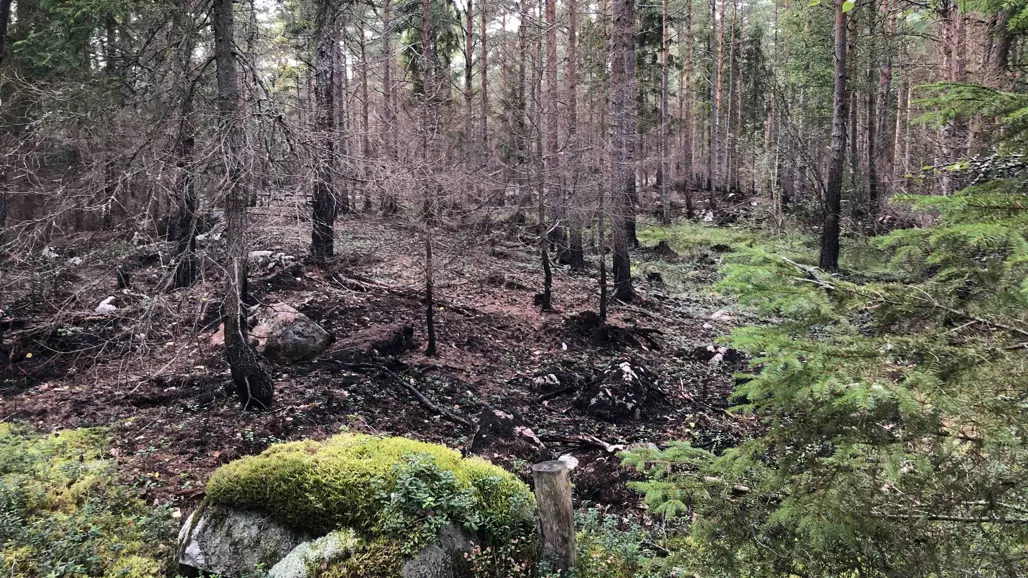
Forest management can reduce the risk of large wildfires
Increasing landscape heterogeneity by reducing forest stand size and diversifying tree species lowers the likelihood of fire spreading. Avoiding ditching is also beneficial.
This was demonstrated in a scientific study by researchers at the Swedish University of Agricultural Sciences (SLU) and the Natural Resources Institute Finland (LUKE).
Many parts of Sweden and Europe have experienced forest fires during this hot summer. It is important to be able to predict how we can adapt forest management to reduce the risk of fire spreading in future.
Wildfires are becoming more frequent due to climate change and increased human impact on the environment. This is particularly evident in northern Europe, where temperatures are increasing at twice the rate as in the rest of the world. At the same time, most of the forests are planted and managed in a uniform way, making fire spread easier still.
We know that fire breaks, large areas kept free of trees, can help fight fire risk. However, according to a study published in Ecological Modelling, there are other strategies to stop fires from spreading.
"Although we cannot control the weather to prevent fires, our study shows that we can still achieve good results through proper management practices," says Yuval Zelnik, a researcher in the Department of Ecology at SLU.
He and his colleagues have developed a model that allows them to test the outcomes of various forest management practices, such as stand size (areas where the trees are of similar age, density, and species composition), tree species diversity, and ditching. The model is based on knowledge of how wildfires spread and how this is influenced by biological and physical processes.
“We found that all three management practices affect fire spread, with the largest effect due to the size of forest stands,” says Yuval Zelnik.
Reducing forest stand size from an average of 10 hectares to 1 hectare, could decrease the size of fires by 90 per cent. We can also reduce fires significantly by having deciduous trees such as birch intertwined between pines and spruce. Finally, avoiding ditching the landscape can also help, due to regions of the forest with more moist soils. All these methods contributes to greater variation in the forest landscape.
“We can effectively create firebreaks without the need to designate separate tree-free areas, and their effect on fire spread is comparable to that of external weather conditions,” says Yuval Zelnik.
The modelling approach allows the researchers to test hypothetical scenarios that would be difficult and costly to do in the field. It also allows them to predict future behaviour, which is particularly important for forests that change slowly over many decades.
The study has been published in the scientific journal Ecological Modelling.
Wildfires in Europe and North America
In recent centuries forest fires in countries like Sweden were not frequent, but this is fast changing, seen for instance in the big wildfire of 2018. This contrasts with northern America, where forest fires have been a long-standing concern and extensively studied.
At the same time, in northern America, forests are managed with less intensity, which has led to limited exploration of the effects of management practices on wildfires in boreal forests. Conversely, northern Europe forests undergo more intensive management techniques, including tree planting, repeated thinning, and landscape modifications such as ditching for soil moisture control.
Given the recent relevance of fires in northern Europe forests, it is essential to comprehend how these management practices impact the spread of fires, and how we can employ this knowledge to effectively prevent wildfires in these regions.
Scientific article
Managing for heterogeneity reduces fire risk in boreal forest landscapes—A model analysis
Contact
-
PersonYuval Zelnik, Researcher